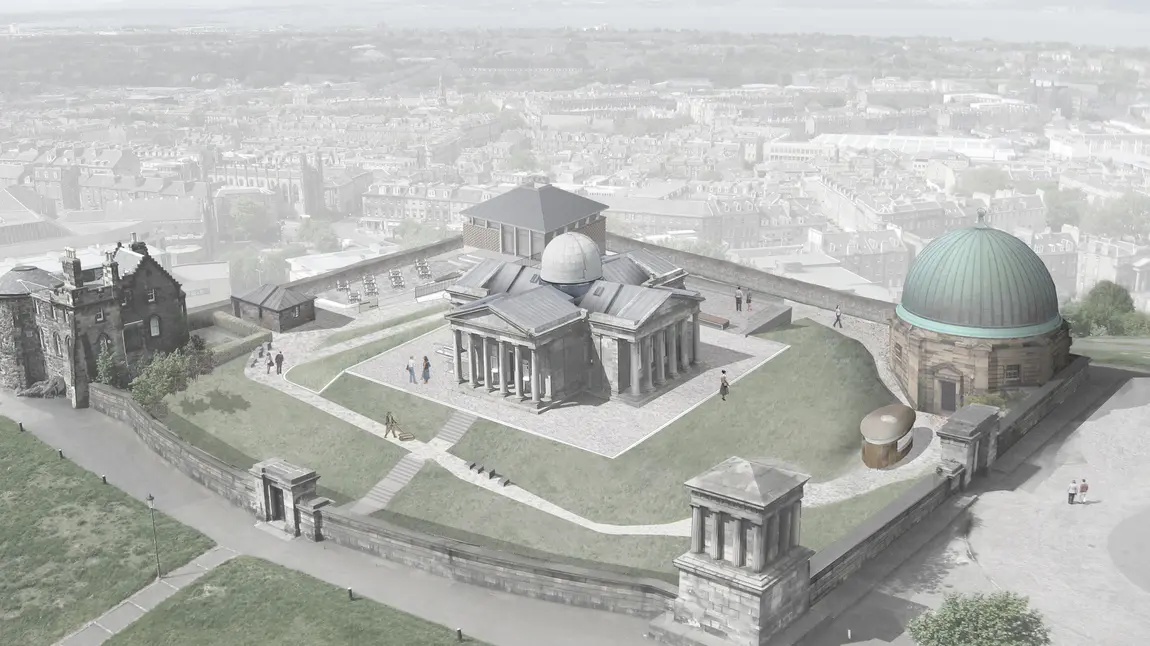HLF puts heritage at the heart of regeneration in Scotland with £7m investment

Thanks to players of the National Lottery, significant projects from the regeneration of Inverness to a new art gallery for Kirkcudbright, to the restoration of Edinburgh’s Observatory on Calton Hill, will not only preserve historic features but will engage people in their heritage and help to bring economic prosperity to the area, and the country.
Cabinet Secretary for Culture, Europe and External Affairs, Fiona Hyslop said: “HLF will make a big difference to these projects and the ambitions behind them. Each has the potential to improve the fabric of our communities, increase tourism, and grow pride in Scotland’s wonderful and rich heritage. It shows the good work of the lottery in action and how it can contribute to the wellbeing of Scotland.”
Dame Seona Reid, Chair of HLF’s Scotland Committee, said: “Heritage is firmly at the centre of shaping and improving local quality of life. [quote=Dame Seona Reid, Chair of HLF’s Scotland Committee] "Heritage is firmly at the centre of shaping and improving local quality of life." [/quote]In practical terms, heritage projects can provide training and education, encourage tourism and kick-start regeneration, but heritage is also important in emotional terms. Research shows that investing in heritage can make people happier about where they live, and enhance their sense of identity. Towns and communities across Scotland are realising that far from being a dead hand on development and regeneration, heritage can be the catalyst that encourages both. And let’s not forget that this important investment is only possible because of the National Lottery players.”
Projects
City Observatory, Calton Hill, Edinburgh
A grant of £1.3m from HLF will see the birthplace of astronomy and timekeeping in Edinburgh, the City Observatory on Calton Hill, freely open to the public for the first time in its history. Currently on the Buildings at Risk register, the original William Henry Playfair architecture will be conserved and restored to create a new-build contemporary visual art gallery space and permanent home for Collective Gallery. Working on the restoration with the City of Edinburgh Council, with heritage trails and viewpoints leading to it, the complex will include the original telescopes, which will also be restored, education space and a restaurant.
Kirkcudbright Art Gallery
Kirkcudbright, ‘The Artists’ Town’, is to benefit from a new art gallery showcasing and celebrating the town’s unique art heritage. With the help of a grant of £931,200 from HLF the Town Hall will be transformed into a modern gallery bringing together works by members of the Glasgow Boys and Scottish Colourists as well as recent artists based in Kirkcudbright.
Davidson Cottage Hospital, Girvan
The former Davidson Hospital will re-establish its place at the heart of the Girvan community as a new Enterprise centre thanks to a £1.39m grant from HLF. The unoccupied building will be restored and developed into much-needed rentable office and studio space for start-up businesses and social enterprise organisations in the town. It will also provide childcare facilities and training in food preparation and catering.
Govanhill Baths
The community of Govanhill is celebrating HLF’s initial support to restore and re-open Glasgow’s best-loved and most complete municipal bath house and steamie. It has awarded a first round pass for a grant of £1.2m to restore Govanhill Baths. The landmark building, integral to the social history of Govanhill, will have the ladies’ pool, learners’ pool and a Turkish suite re-opened. The former steamie will be turned into a theatre venue and community events and arts space.
The Fife Pilgrim Way
With a first round pass of £406,400, HLF has indicated its support for a long distance walking route from Culross/North Queensferry to St Andrews encouraging local communities and visitors to explore the medieval history of the region. Following much of the original routes walked by medieval pilgrims, the project will create, repair, and upgrade 109km of paths. A website for the route and supporting app working with I-beacon technology, will provide route information, heritage imagery and audio interpretation accessed on smart phones through sensors located along the route.
Notes to editors: further information
- HLF: Shiona Mackay, on tel: 01786 870638 and mobile: 07779 142890; or Jon Williams on tel: 0207 591 6035, Mobile: 07891 309708 and email: jonw@hlf.org.uk
- City Observatory, Edinburgh: Lori Anderson, on tel: 0131 556 1264 and email: lori@collectivegallery.net; or Kate Gray, on tel: 0131 556 1264 and email: kategray@collectivegallery.net
- Inverness Townscape Heritage: Sylvia Tarrant, on tel: 01463 702071 and email: sylvia.tarrant@highland.gov.uk
- Kirkcudbright Art Gallery: Kenny Eggo, on tel: 01387 260147 and email: kenny.eggo@dumgal.gov.uk
- Davidson Cottage Hospital: Stuart Lindsay, on tel: 01465 710628 or 07977 115974
- Govanhill Baths: Fatima Uygun, on tel: 0141 433 2999 and emai: fatima@govanhillbaths.com
- Fife Pilgrim Way: Janice Macgregor, on tel: 0131 220 8222 and email: janice.macgregor@mucklemedia.co.uk